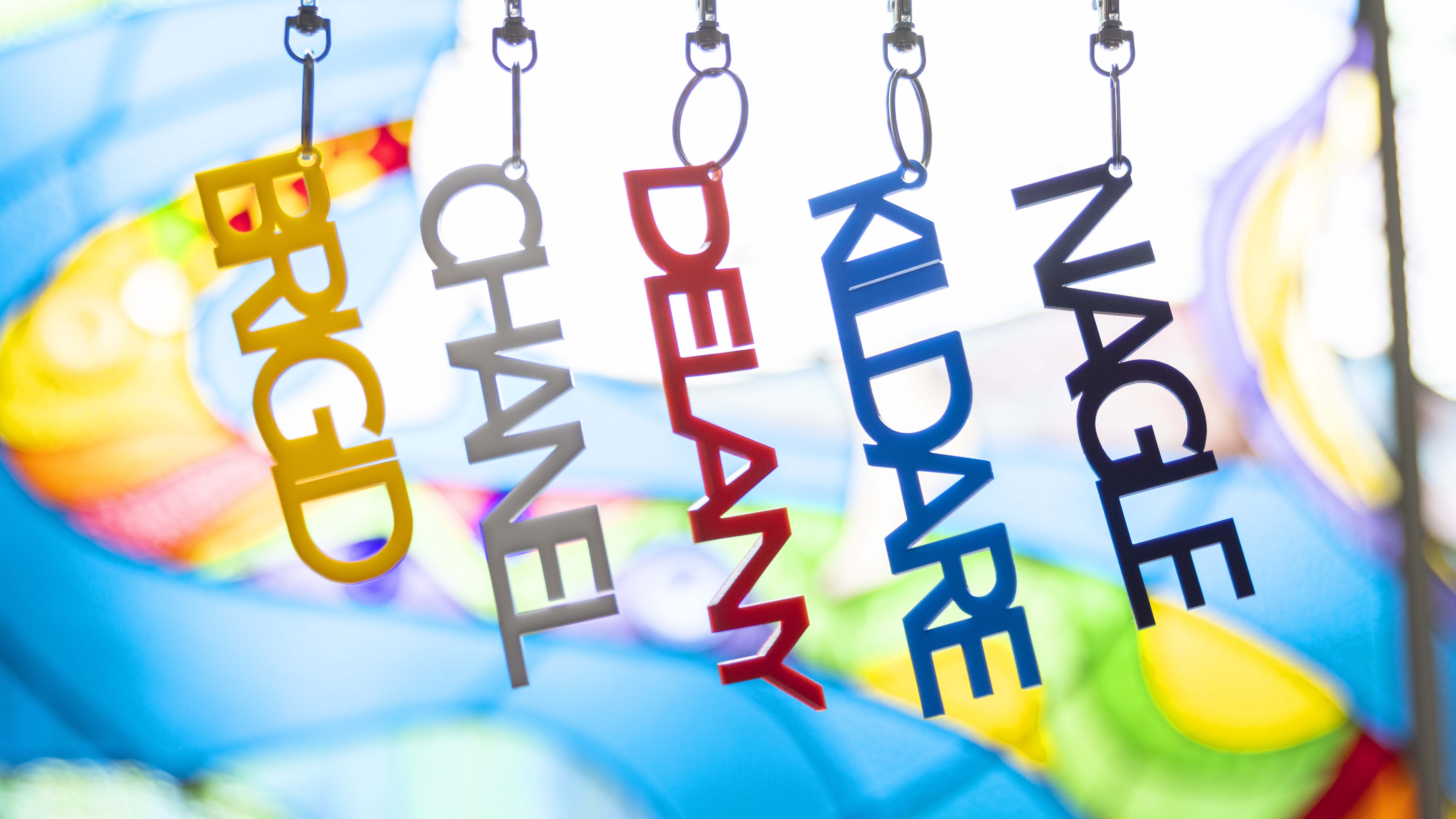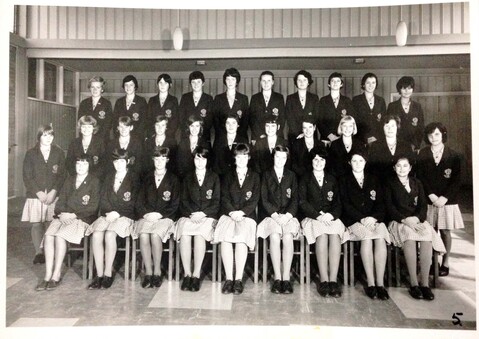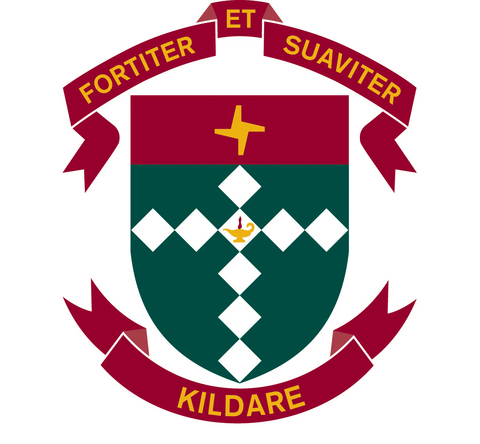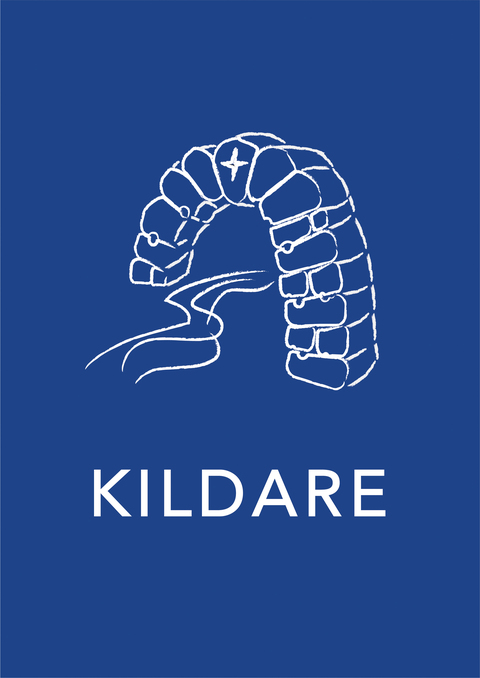

Kildare College was opened in 1966 when the Brigidine Sisters accepted an invitation from the Archbishop of Adelaide, Bishop Matthew Beovich, to open a school for girls in the then newly growing North-Eastern suburbs. Classes commenced at the college with 32 students in February of that year with the official opening taking place on March 13 1966. The Brigidine Sisters lived at the college convent until the end of 1990. Kildare Education Ministries maintains responsibility for the wellbeing and governance of Kildare College, the only Brigidine school in South Australia.

The Kildare College crest reflects our origins and traditions. The crest includes two crosses, the gold Cross of St Brigid, based on the simple cross of reeds Brigid used and the large cross of diamonds taken from the badge of Bishop Daniel Delany. The lamp of learning in the centre of the badge represents the light of Christian faith and the light of learning. This lamp is a powerful symbol for us as a community of life-long learners, linked to St Brigid's original learning community in fifth century Ireland.
![st brigid cross[1].png st brigid cross[1].png](/files/8351/st_brigid_cross1.png)
Kildare takes its name from Kildare in Ireland, the site of St Brigid's first monastery. St Brigid lived in fifth century Ireland as a valiant, strong and gracious woman and prophetic leader. She revolutionised Irish society at the time by forming religious, learning communities of women.
The Brigidine Sisters were established in Ireland in 1807 by Dr Daniel Delany, Bishop of Kildare and Leighlin.

At Kildare, each student belongs to a house group. The names of the houses are significant to us as a Brigidine School.
In 2013 each House was appointed a symbol.
This served to provide another way of helping students identify the various symbols which are used within the Brigidine order and Kildare College.
These symbols and their importance are displayed on PC rooms.
New House banners were created where the symbol is noticeable.
Over 4 newsletters the symbols and their importance to our community were advertised to the wider community.
In 2018 a new House was established, Nagle House. The name Nagle was chosen to help better connect to Kildare Ministries.

Brigid - St Brigid, the patroness of the Brigidine Sisters
St Brigid’s Cross -
In St Brigid’s time, it was customary for rushes to be scattered on the floor of a house.
Legend tells us that one day, Brigid visited a pagan chief who was on his deathbed. She reached down and picked up some rushes from the floor and wove them into a cross. When she was asked by the man what she was doing, she told him about the significance of the Christian cross and how Jesus died to save all people, including him.
He was so overcome by the idea that he could be loved so much that before he died he converted to Christianity.

Chanel - Sister Chanel Gough, the first Australian to become the world leader of the Brigidine Sisters
The Lamp of Learning -
Fire is the central image in the Brigidine tradition.
A sacred fire burned in Kildare reaching back into pre-Christian times. Scholars suggest that priestesses used to gather on the hill of Kildare to tend their ritual fires while invoking a goddess named Brigid (not St Brigid) to protect their herds and to provide a fruitful harvest.
When St. Brigid built her monastery and church in Kildare in the 5th century, she continued the custom of keeping the fire alight. For her and her nuns, however, the fire represented the new light of Christianity.
Today, this symbol is used by the Brigidine Sisters and Kildare Ministries schools in the Brigidine tradition as a symbol of faith and as a light of learning.

Delany - Daniel Delany, the founder of the Brigidine Sisters
The Oak Tree -
Kildare (in Ireland) takes its name from Cill Dara, the church of the oak. This is where St Brigid, in the 5th century, established her monastery and her order of nuns. Sadly, in the 1100s, her monastery was taken over and eventually, her order of nuns was brought to an end.
On February 1, 1807, Bishop Daniel Delany gathered a group of 6 women who would help him in his mission of spreading the message of the Gospels and educate the poor. He put them under the patronage of St Brigid and in doing so, re-established the order of nuns that Brigid had started hundreds of years earlier. Their convent, however, was not in Kildare, but in a small town called Tullow. In order to make the link between Brigid’s original monastery at Kildare and the newly re-founded Order of St Brigid (Brigidines), Bishop Daniel Delany planted an oak sapling from Kildare in the grounds of what is now the Brigidine Convent in Tullow.
Today, many Brigidine schools, just like Kildare College, have oak trees grown from acorns taken from the oak tree in Tullow.

Kildare - the place in Ireland where St Brigid built her first monastery
Brigid’s Well -
St Brigid established various gathering places around wells across Ireland as she travelled to tell the Christian story to the Celtic peoples. The 'Wells' became sacred places of prayer and of healing and are to be found there today. This well, ‘Brigid’s well’ is a lovely example of the ongoing practice of water admiration in the Celtic world.
The well produces so much water that the rushing sound of the flowing stream creates a meditative ambience where it is easy to enter a contemplative state of consciousness.
Leading up to the well is a row of five small standing stones, prayer stones, which according to local tradition represent virtues of Brigid: woman of the land, the peace maker, the friend to the poor, the hearth woman and woman of contemplation.

Nagle - Honara (Nano) Nagle, pioneered her own religious order known as "The Presentation Sisters of the Blessed Virgin Mary".
The Triskele -
The Triskele can be thought to represent motion as all three arms are positioned to make it appear as if it is moving outwards from its center.
Movement, or motion, is believed to signify energies. In particular within this Celtic Symbol the motion of action, cycles, progress, revolution and competition is represented.
Nano Nagle was one who, in the 1700s in Ireland, worked to support Catholics through education. She was known for her courageous actions, the progress that Catholics were able to make due to her care, and ultimately the revolutionary power of her work.